

SOLUTION
Release Time:2020-07-22
Click on:311 Times
According to the characteristics of undergraduate physics, we provide the basic course platform of quantum information. The basic course fully demonstrates the physical principles and the basic experimental phenomena in quantum physics, which can be integrated with the undergraduate basic physics courses such as optics. At the same time, it provides innovative experimental courses and scientific research verification platform for senior undergraduates.
1、 Professional team and support of platform
Originated from the CAS Key Laboratory of Quantum Information, Qasky has rich experience in quantum information teaching and scientific research. At the same time, it relies on the provincial quantum security engineering technology research center, and the academician workstations of the team of Guang-can Guo and Ji-ren Cai. The experience in the development of quantum cryptography software and hardware guarantees the richness and professionalism of the quantum teaching and scientific research platform.
2. Full-process one-stop service platform
The platform provides one-stop services, has a rich curriculum system and supporting products, and can be customized with college teachers. Product design combines software and hardware, and develops virtual simulation software on the basis of hardware experimental devices, aiming to expand the breadth of curriculum coverage with rich software, and to tap the depth of knowledge with professional hardware. The product system can be configured flexibly and freely, and can provide full-process technical support including laboratory environment construction and electronics test and measurement system construction.
The curriculum design refers to the relevant courses of USTC. The curriculum system design fully considers the educational characteristics of undergraduate students and gradually advances in the level of knowledge. The curriculum system takes into account the daily basic experimental teaching and innovative exploration experiments for seniors and graduate students.
The following specifically lists the product introduction of the superposition state preparation experiment in the fundamental aspect of quantum information and the quantum bomb experiment in the application of quantum information. In addition, the quantum entanglement experiment and quantum secure communication experiment can be combined with our company's Qlab, Qsim simulation software and hardware platform to conduct experimental teaching in a combination of software and hardware.
1. Quantum superposition state preparation experiment
Quantum superposition state is a basic concept in quantum mechanics. The famous thought experiment "Schrödinger's Cat" discusses whether a macroscopic object can be in a quantum superposition state. Quantum superposition state is an important foundation in quantum information technology. For example, the security of quantum secret communication depends on the quantum superposition state being measured by an eavesdropper to produce measurement collapse, which leads to the eavesdropper's detection. In quantum computing, a qubit can be in the superposition state of 0 and 1 at the same time. Therefore, compared with classical computing, the computing power of quantum computing increases exponentially with the number of bits.
Knowledge points: quantum superposition state, measurement collapse principle, pure state and mixed state
Courses involved: quantum mechanics, principles of quantum information physics, optics, optoelectronic information
Experiment content:
-Light path construction
-Superposition state preparation
-Superposition state measurement
-Mixed state measurement
Experimental principle:
The BBO crystal is pumped by a 405nm laser, a parametric down conversion process occurs. One pump photon is decomposed into two parametric photons, and the parametric light is collected through two single-mode fibers, and one of the photons is detected (we call it the marker light), To predict the generation of another photon (signal light), so as to achieve marking a single photon source. In the signal optical path, single-photon polarization superposition state preparation and measurement experiments are performed through polarization beam splitters, wave plates, etc. In addition, a thermo-light source can be used to prepare a mixed state, and a comparison experiment can be performed with the pure state of the labeled single-photon source.
Experimental setup:
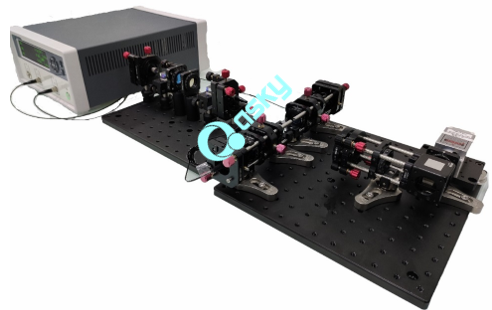
Technical Parameters:
-Single channel count rate>20000c/s
-Meet the counting rate>3000c/s
-HV base extinction ratio>20:1
Complete equipment: marking single photon source module, superposition state preparation measurement module
Essential equipment: accord with counter
Optional list: mixed light source
Suggested class hours: 2-3 class hours
2. Quantum bomb experiment
" Quantum bomb " is a hypothetical experiment proposed by two physicists Avshalom Elitzur and Lev Vaidman from Tel-Aviv University in Israel. Its hypothetical scenario is that there are a batch of bombs, and it is necessary to determine whether each is a "active bomb" or a "dud". The classic method can only make a judgment if each one is detonated. The quantum method is to put a bomb in one arm of the MZ interferometer. It is assumed that the bomb is equipped with a single-photon detector, which will detonate after detecting the signal. If the bomb is a dud, it is equivalent to no obstruction in the light path, and the result of MZ interference is the response of one of the detectors (assuming D0). If it is an active bomb, the MZ interference process does not occur. At this time, there is a 25% probability of D1 response. In this case, we can know that the bomb is an active bomb without detonating the active bomb.
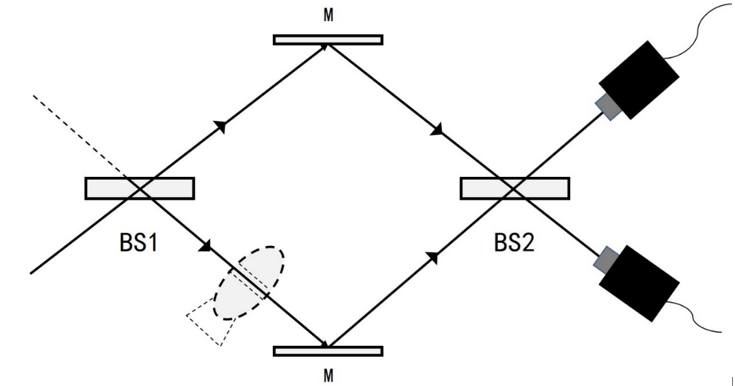
" Quantum bomb " is a typical experiment demonstrating the superiority of quantum in solving some practical problems compared with classical.
Knowledge point: quantum superposition state, single photon interference
Involved courses: quantum mechanics, optics, optoelectronic information, quantum information principle
Experiment content:
-"Quantum Explosion" light path construction
-"Dumb" detection experiment
-"Live bomb" detection experiment
Experimental principle: Using the labeled single photon source, the experimental device of "quantum bomb" is built in the signal optical path. In the experiment, a single photon Mach Zehnder interferometer is used to simulate the "active bomb" or "dud" detection experiment by adding or not adding a coupling head (followed by a single photon detector) in the optical path. The probability of not detonating and being known as "active bomb" can be calculated by the coincidence count in two detection experiments.
Experimental setup:
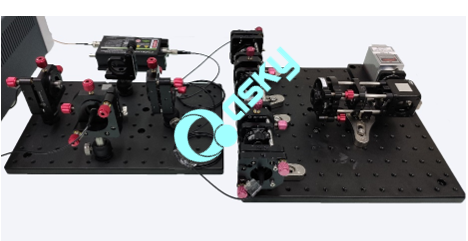
"Active bomb" detection system
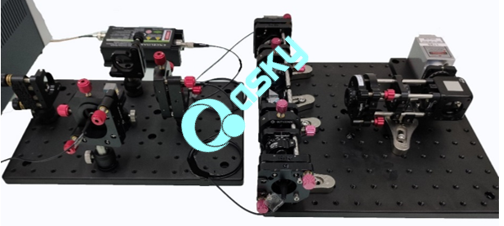
Dud detection system
Technical parameters:
-Single channel count rate > 20000 C / S
-Coincidence count rate > 3000C / S
-HV based extinction ratio > 20:1
-MZ interference visibility > 85%
Complete set of equipment: labeled single photon source module, quantum burst module
Necessary equipment: coincidence counter
Suggested class hours: 2-3 class hours
For more product information and detailed solutions, please contact us
Marketing Department Hotline: 0553-3019808
Special line for educational research products: 0551-63637001
Mobile phone: 18226779355
E-mail address: Qeducation@qasky.com
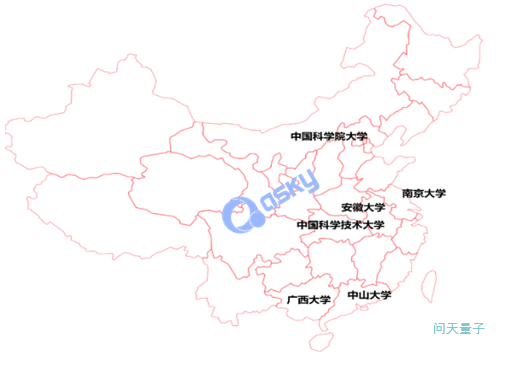
Colleges that are using Quantum Education Innovation Platform

Anhui Public Network Security No. 34010402702478

Quanta-edu